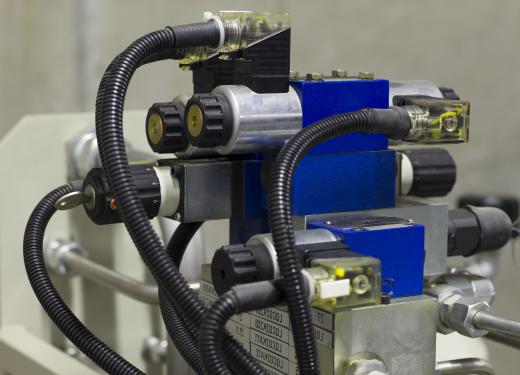A fast actuator is an electromagnetic actuation device capable of extremely fast activation times. The fast actuation concept is somewhat subjective and difficult to define accurately, however, as standards and expectations differ from industry to industry. It is generally accepted that actuation times of 10 milliseconds or less qualify as fast actuation. These devices are used in applications such as automotive valve actuation, mail sorting, and explosion suppression where lightning-quick response times are required. Fast actuator types that fit this description are typically electromagnetic solenoid variants, as mechanical actuators are generally not capable of high-speed operation.
Many mechanical applications require remote activation of system components at speeds not possible with conventional actuation devices. The average response time for a conventional solenoid is around 30 to 50 milliseconds, which, although fast, is not nearly fast enough for the high-speed applications. Devices such as electromagnetic automotive valve systems require response times of 10 milliseconds or below, which require a very fast actuator.

To achieve these rapid response times, the design of a fast actuator needs to be adjusted to address two basic issues: actuation force and stroke length. Actuation force is the physical attractive power of the electromagnetic field used to activate the solenoid plunger. The stronger the field is, the more rapidly the plunger will respond and the shorter the response time will be. Obviously, the plunger design and the materials used need to be carefully matched to maximize these refinements.
The second method of speeding up actuator response times is reducing plunger stroke length. The shorter the distance is that the plunger has to travel to complete the cycle, the shorter the response time. This measure also requires a specific set of design parameters to be applied in both the solenoid and the devices that it actuates. Any design and construction sacrifices made to implement these parameters are generally well worth it, though, as fast actuator response times below 0.2 milliseconds are quite possible. This makes the high-speed solenoid actuator an ideal choice for applications such as mail sorting diverters, electronic valve controllers, and explosion suppressant dispersers.
The mechanical actuator family is generally excluded from the running in the fast actuator stakes. Conventional hydraulic, pneumatic, and electromechanical actuators simply cannot produce the sub-10 millisecond response times required due to the inertial and frictional forces inherent to their operation. Until these limitations are overcome, the electromagnetic solenoid will remain the only real fast actuator option for demanding, high-speed applications.
